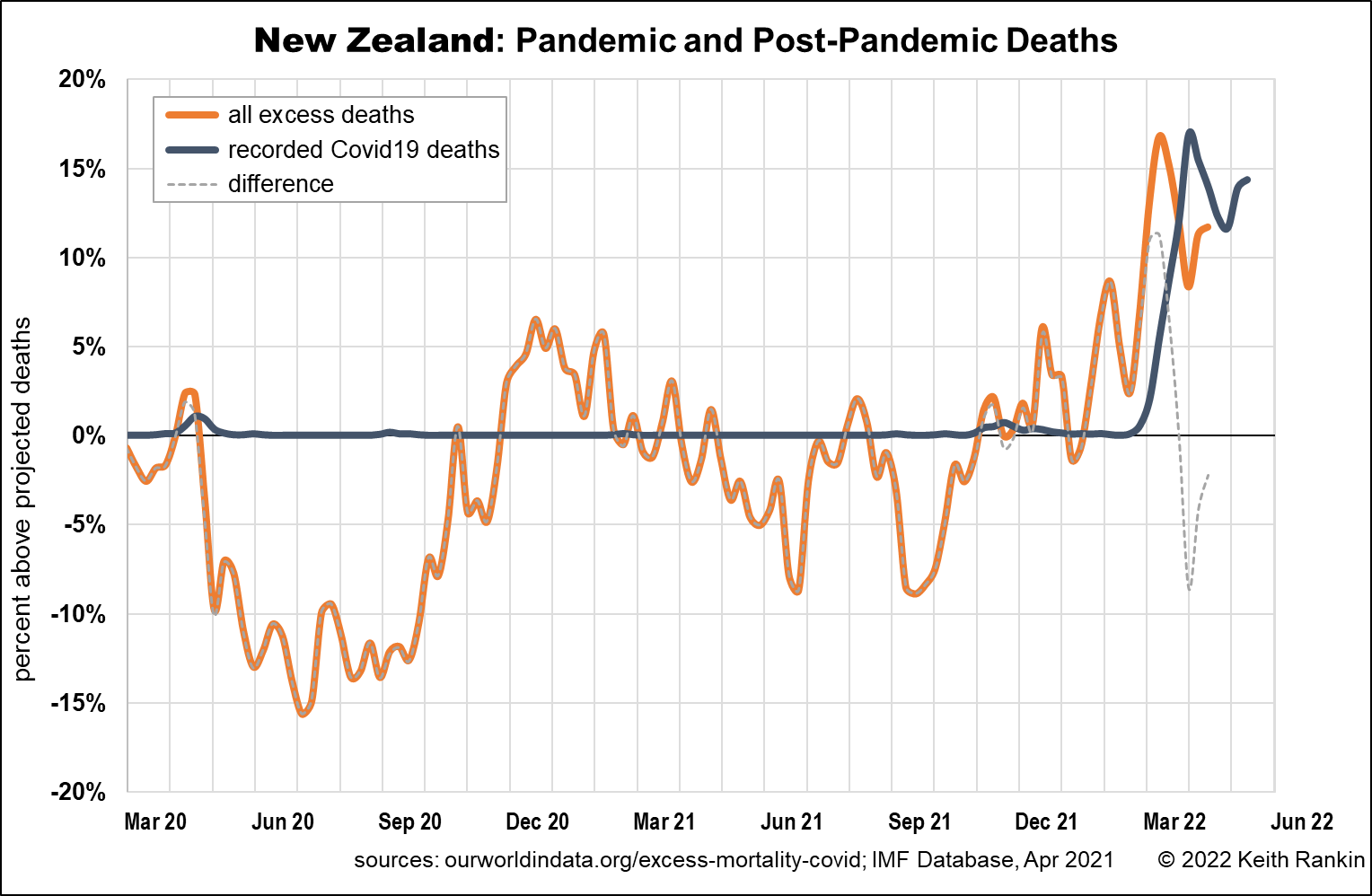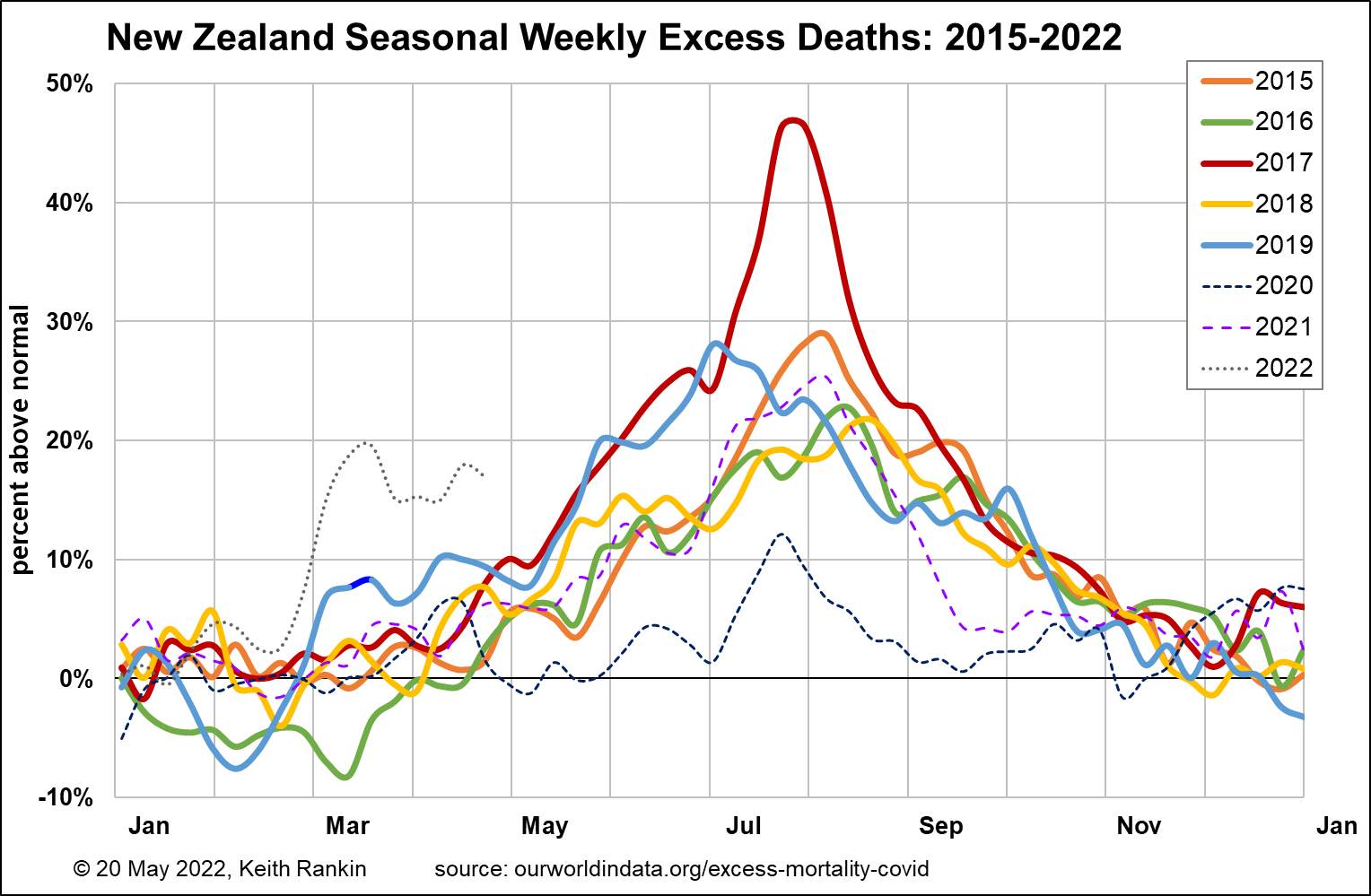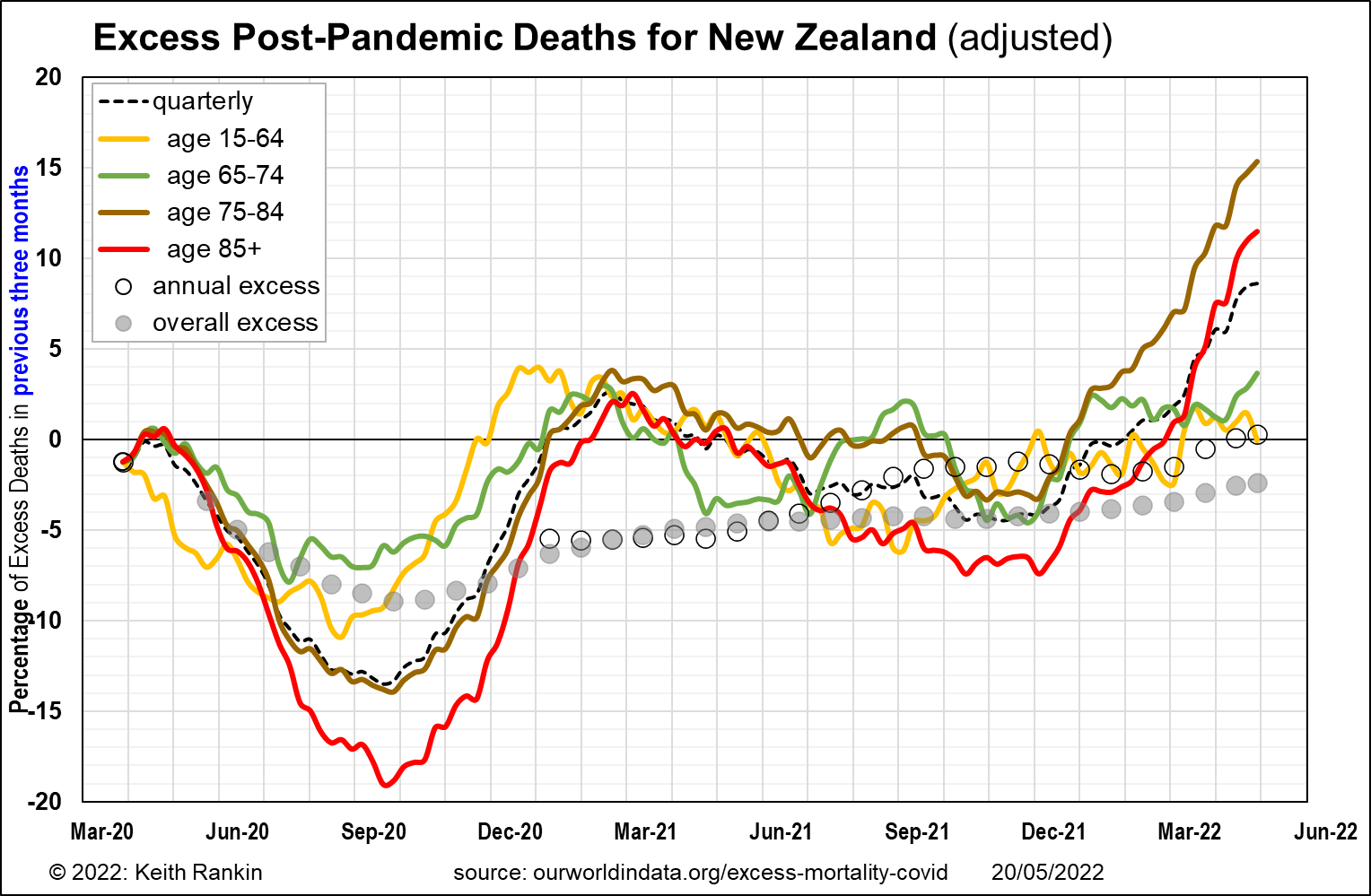Analysis by Keith Rankin.

We know that New Zealand has one of the world’s lowest mortality outcomes, so far, in the Covid19 pandemic. (So has North Korea.) It’s still far too early to access the costs incurred – loss of utility enjoyed by actual and ‘would-have-been’ New Zealand residents – and is also too early to properly assess covid’s death toll.
The above 2022 chart shows that New Zealand is rejoining the world, in having excess pandemic death. Still not high by the standards of most other countries. And the actual excess death peak in March almost exactly matches the covid-reported death peak, albeit allowing for reporting delay. So, so far, the upside and downside biases in the official Covid19 death toll for New Zealand are evenly balanced. Just as some people have died with covid but not of covid, some others have died of covid, undiagnosed. This is usual. (The ‘difference’ plot in the chart, for recent weeks, is caused by the reporting delay, and not by any net bias nor from public health quarantines.)
In addition to the recent excess deaths, the main chart feature to note is that July and August 2021 look very different from July and August (midwinter) in 2020. These deaths – matching the usual seasonal peak – have not yet been explained. While normally at that time of the year these would be influenza deaths, there were in fact neither influenza nor covid deaths in July 2021.

The second chart for excess deaths shows deaths from all seasonal causes, such as influenzas and colds. We see clearly that New Zealand is on a significant ‘excess deaths’ path this year; so far not unlike 2019, though at a higher level.
The question begged by the chart is whether excess deaths this year will reach anything like the peak of the 2017 (undeclared) influenza pandemic. And, if they do, to what extent will the excess deaths be deaths due to Covid19? And how many will be due instead to a range of other transmissible microbes, given our probable loss of ‘street immunity’ (to use a phrase from a New Zealand vet, when discussing dogs getting ‘kennel cough’ this year)? My sense is that seasonal deaths will peak at about 2017 levels. (Street immunity, by the way, should be understood to arise from diet and lifestyle as well as from regular exposure to passing pathogens.)
Note the 2021 winter peak, similar to the influenza peaks of 2015, 2016 and 2018.

The final chart shows New Zealand excess deaths by age cohort. The chart is not directly comparable with the other two, because it shows deaths over the ‘previous three months’. The chart shows that, as with other economically developed countries – eg the small countries in Western Europe – covid deaths are, like influenza deaths, concentrated among the older population. (This is unlike the United States, where there were huge percentages of excess deaths of people under 75 years-old. The United States’ data reflects huge amounts of ancillary unwellness in the middle-aged population. I heard one United States doctor mention in passing, on the Al Jazeera news, that one recent research paper indicates that 40 percent of United States covid fatalities were of people with diabetes. This seems important, though the media haven’t picked up on it.)
(Note that age data for most European countries, while important, needs to be treated with caution; that’s due to the complex demographic consequences of World War 2.)
In New Zealand, it is almost certain that many of the people who died from Covid19 this year are older people who would have died from Covid19 in 2020 or 2021, had covid penetrated the quarantine barriers in the way it did in Eastern Europe and South America. While, from the ‘annual’ and ‘overall’ excess deaths, the chart continues to show a negative overall toll, it shows that excess deaths for the last twelve months are now above zero.
Although the New Zealand’s covid pandemic mortality data is fully consistent with prosperous and relatively equal western countries, there is no guarantee that post-pandemic mortality will continue to fit that pattern. New Zealand’s population has a number of chronic health challenges; challenges which may make post-pandemic mortality more like that in the USA than in the EU. New Zealanders have not yet had their street immunity tested; in all likelihood street immunity has declined precipitously among New Zealand people, just as it has among New Zealand’s pet dogs.
*******
Keith Rankin (keith at rankin dot nz), trained as an economic historian, is a retired lecturer in Economics and Statistics. He lives in Auckland, New Zealand.







